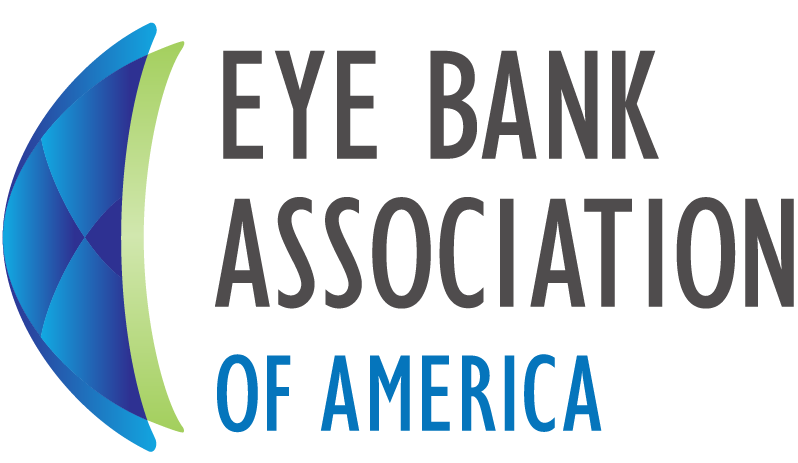- Final guidance to be implemented immediately, by February 3, 2025.
- Responsible person authorized to perform DE should have appropriate medical training and be qualified to identify risk factors and conditions, clinical evidence, and physical evidence consistent with higher risk for sepsis. Previous wording was “medical training and adequate knowledge of relevant Federal regulations and guidances.”
- Defer donors who currently, are known to have a medical diagnosis of sepsis or suspicion of sepsis. FDA removed “diagnosis of sepsis that is not explained by other clinical conditions at the time of death.”
- Determine to be ineligible any potential donor who exhibits clinical evidence of sepsis.
- Medical records of a potential donor from their current hospital stay or other healthcare facility stay preceding HCT/P recovery, that document sepsis, bacteremia, septicemia, sepsis syndrome, systemic infection, systemic inflammatory response syndrome (SIRS) due to infection, or septic shock.
- FDA removed words “immediately preceding death”, and expanded beyond just hospital stay to all healthcare facilities.
- Due to infection was added to SIRS here.
- Clinical evidence exhibited by a potential donor that is consistent with risk of systemic infection and whose immune system was weakened and unable to respond to infection (i.e., immunocompromised or immunosuppressed, such as due to age, a medical condition, or medication), or who is a sepsis survivor. In this scenario, you should document your communication with the patient’s primary treating physician to obtain additional information regarding their patient’s potential for higher risk of sepsis
- All new verbiage.
- Requires communication with patient’s primary treating physician for higher risk of sepsis
- Adds new risk factors – 65 years or older, have weakened immune systems, chronic medical conditions (e.g., diabetes, lung disease, cancer, kidney disease), recent severe illness or hospitalization, or who are sepsis survivors.
- Sepsis survivor would require previous hospital records.
- Indicators of higher risk for sepsis when making a donor eligibility determination
- Signs of sepsis may include altered mentation, hypoxemia, elevated lactate, oliguria, hypotension, renal dysfunction, elevated bilirubin, and/or multisystem organ failure. Note: Last 3 are new. Removed 2 of 4 SIRS criteria but mentioned above as SIRS due to infection.
- Prolonged stays (>7 days) in an intensive care unit. New
- Positive blood cultures, although sepsis may be present without a positive blood culture. This is new verbiage so eye banks can’t rely on negative blood cultures.
- Unexplained generalized rash or fever
- Mtb added as an RCDAD
- Mtb transmission via ocular tissue has not been reported; however, Mtb has been detected in ocular tissues (i.e., cornea, sclera, and conjunctival tissues), and in fluids that have contact with ocular tissues, using mycobacterial cultures and/or PCR for Mtb DNA from individuals with systemic TB, LTBI, primary ocular TB, and retinal vasculitis due to Mtb (Refs. 98-101). Surgical procedures used during the recovery of corneas and sclera can potentially lead to cross contamination if Mtb organisms are present in the donor’s blood or ocular fluids, particularly when whole globes are enucleated (Ref. 100).
- Donors with a positive test for TB infection or a medical diagnosis of TB disease, TB infection, or LTBI must be determined ineligible. LTBI ever, not within past 2 years
- Obtain and consider the following information:
- Persons who were born in, have ever lived in, or ever traveled to areas of the world where TB is common (e.g., most countries in Latin America, the Caribbean, Africa, Asia, Eastern Europe, and Russia); Travel risk and previous residence is NOT currently included in DRAI.
- Persons who have ever lived in or worked in high-risk congregate settings (e.g., jails, prisons, correctional facilities, long-term care facilities, homeless shelters); Check if removed form Eye-only DRAI
- Persons who ever lived with, or have been a close contact with, another person who has TB; or
- Persons who have certain medical conditions (e.g., diabetes, chronic kidney disease/end stage renal disease with or without dialysis), or are on medication, that can impair immune function. Would include most ocular donors
Note: Donor might be eligible provided there is no clinical or physical evidence, or suspicion, of LTBI or TB disease, and no communicable disease risks have been identified.
- Determine whether autopsy was not performed due to TB risk or if special precautions taken for cadaveric donors. Check how easy this would be to obtain. FDA doesn’t require eye banks to wait for autopsy results.
- Must determine as ineligible donors with clinical evidence of Mtb infection, Examples include:
- Persons who have ever had a medical diagnosis of TB disease or LTBI; or
2. Persons who have ever had a positive test for TB infection or TB disease. For example, a positive blood test such as Interferon Gamma Release Assay (IGRA) (e.g., T-SPOT.TB, QuantiFERON-TB Gold Plus, QuantiFERON-TB Gold In-Tube), a positive tuberculin skin test (TST) (also known as PPD, Mantoux, or tine test), or a positive test for TB infection on any specimen (i.e., mycobacterial culture, NAAT or PCR for Mtb DNA).
No allowance for treated TB or false positive tests.
- Symptoms of TB disease that should be considered for DE determination
- cough lasting 3 weeks or longer;
- • chest pain;
- • coughing up blood (hemoptysis) or sputum (pulmonary TB);
- • weakness or fatigue;
- • unexplained weight loss or muscle wasting (cachexia or consumption);
- • loss of appetite;
- • fever, chills, night sweats;
- • generalized or localized lymphadenopathy or lymphadenitis;
- • blood in the urine (renal TB);
- • headache or confusion (TB meningitis);
- • back pain (TB of the spine);
- • hoarseness (TB of the larynx); or
- • radiographic imaging (e.g., x-ray or CT scan) suggestive of TB disease.
When a potential donor has one or more symptoms or signs above, you should document your communication with their primary treating physician to obtain additional information regarding their patient’s potential for TB infection or LTBI, unless TB has already been ruled out by the patient’s primary treating physician.
Not all of these are in the DRAI and are pretty general (back pain, blood in urine). Will need education and flowcharts for DE staff. This will require physician communication.
- Donor screening risk factors:
1. Generalized lymphadenopathy.
2. Unexplained cutaneous lesions that may be consistent with tuberculosis
- There are currently no FDA-licensed, approved, or cleared Mtb donor screening tests.
- Manufacturers that process bone, heart valves, or dura mater must perform AFB preprocessing cultures.
- HIV has also been isolated from tears, retina, cornea, aqueous humor, iris, and conjunctiva
- FDA-approved antiretroviral drugs (i.e., PrEP, PEP, or ART), can reduce the HIV viral load of individuals to undetectable levels as determined by conventional testing; however, these antiretroviral drugs do not fully eliminate the virus from the body
- 3-month risk period for HIV risk factors and conditions
- Eliminates the MSM screening question and instead uses the same individual risk-based questions regardless of sex or gender.
- Persons who have ever had a positive or reactive screening test for HIV are ineligible.
- Reworded to “Persons who have engaged in non-prescription injection drug use in the preceding 3 months”
- The term “sex” or “sexual contact” refers to vaginal, anal, or oral sex, regardless of whether a condom or other protection is used.
- If there is any uncertainty about when their sexual partner exchanged sex for money, drugs or other payment, (or engaged in non-prescription drug use) the person is ineligible for 3 months. Need to educate NOK to not answer IDK.
- Persons who have had a new sexual partner in the preceding 3 months and have had anal sex in the preceding three months Will require new DRAI questions
- Persons who have had more than one sexual partner in the preceding 3 months and have had anal sex in the preceding three months Will require new DRAI questions
- Includes having had sex with someone in a relationship that ended in the past and having sex again with that person in the last 3 months. New DRAI question or education for NOK.
- New questions about medications to treat or prevent HIV infection (e.g., antiretroviral therapy (ART), pre-exposure prophylaxis (PrEP), and post-exposure prophylaxis (PEP)).
- Persons who have ever taken any medication to treat HIV infection (i.e., ART)
- Persons who have taken any medication by mouth (oral) in the preceding 3 months to prevent HIV infection (i.e., antiviral PrEP or PEP)
- Persons who have received any medication by injection in the preceding 2 years to prevent HIV infection (e.g., long-acting antiviral PrEP or PEP)
- Children 1 month of age or younger who were born to a mother with, or at risk for, an HIV infection Previously 18 months
- Children breastfed in the preceding 6 months by a mother with, or at risk for, an HIV infection Previously 12 months
- Addresses Infant donors who receive human breast milk from a source other than the birth mother.
- Examples of clinical evidence of HIV may include:
- A prior positive or reactive screening test for HIV;
- Unexplained weight loss;
- Unexplained night sweats
- Unexplained generalized rash; NEW
- Blue or purple spots on or under the skin or mucous membranes typical of 451 Kaposi’s sarcoma;
- Generalized lymphadenopathy (swollen lymph nodes) for longer than one month; Previously disseminated lymphadenopathy.
- Unexplained temperature of >100.5°F (38.06°C) for more than 10 days;
- Unexplained persistent cough or shortness of breath;
- Opportunistic infections;
- Unexplained persistent diarrhea; and/or
- Unexplained persistent white spots or unusual blemishes in the mouth.
- Physical evidence for risk of sexually transmitted diseases and infections, such as perianal lesions, genital ulcerative disease, herpes simplex, mpox, or chancroid. Added perianal lesions for ALL donors, not just males, and added Mpox.
- Changed from nonmedical percutaneous drug use to non-prescription injection drug use.
- Clarified that a person may be eligible if a tattoo was applied by a state regulated entity with sterile needles and non-reused ink, or if ear or body piercing was done using single-use equipment in past 3 months.
- Changed from disseminated to Generalized lymphadenopathy
- Unexplained generalized rash or fever NEW
- Requires use of an FDA-licensed donor screening test that includes detection of anti-HIV-1 group O and removing the recommendation to screen HCT/P donors for HIV-1 group O risk.
- HCV NAT can detect HCV within 1-3 weeks after initial infection; EIA detects antibodies 8-12 weeks after infection.
- 3-month risk period for HCV risk factors and conditions
- Eliminates MSM and uses the same individual risk-based questions for every donor regardless of sex or gender.
- If there is any uncertainty about when their sexual partner exchanged sex for money, drugs or other payment, (or engaged in non-prescription drug use) the person is ineligible for 3 months. Need to educate NOK to not answer IDK.
- Defer persons who have had a new sexual partner in the preceding 3 months or multiple sex partners in the past 3 months and have had anal sex in the preceding three months. Requires new DRAI questions.
- Includes having had sex with someone in a relationship that ended in the past and having sex again with that person in the last 3 months. New DRAI question or education for NOK.
- Clarified that a person may be eligible if a tattoo was applied by a state regulated entity with sterile needles and non-reused ink, or if ear or body piercing was done using single-use equipment in past 3 months.
- Children 1 month of age or younger born to a mother with, or at risk for, HCV infection; see risk factors above. NEW – previously only for HIV risk.
- Examples of clinical evidence of HCV may include:
- A prior positive or reactive screening test for HCV;
- Unexplained jaundice;
- Unexplained hepatomegaly;
- Generalized lymphadenopathy; and/or NEW
- Unexplained generalized rash or fever. NEW
- Laboratory data ALT, AST, Bili, prothrombin time wording is the same and not a deferral if cause other than hepatitis was established.
- Added physical evidence of perianal lesions for ALL donors, not just males.
- Under physical evidence – Added generalized lymphadenopathy – previously disseminated lymphadenopathy.
- Unexplained generalized rash or fever. NEW
- No changes to testing recommendations.
- Transmission of HBV infection has been reported after use of an avascular tissue such as cornea (Ref. 22).
- HBV NAT detects HBV DNA 2 to 5 weeks after infection, and up to 40 days (mean 6 to 15 days) before HBsAg. HBV DNA has been detected in less than 10% of persons with isolated anti-HBc.
- 3-month risk period for HBV risk factors and conditions
- Eliminates MSM and uses the same individual risk-based questions for every donor regardless of sex or gender.
- Persons who have ever had a positive or reactive screening test for HBV are ineligible
- Reworded to “Persons who have engaged in non-prescription injection drug use in the preceding 3 months”
- If there is any uncertainty about when their sexual partner exchanged sex for money, drugs or other payment, (or engaged in non-prescription drug use) the person is ineligible for 3 months. Need to educate NOK to not answer IDK.
- Defer persons who have had a new sexual partner in the preceding 3 months or multiple sex partners in the past 3 months AND have had anal sex in the preceding three months. Requires new DRAI questions.
- Includes having had sex with someone in a relationship that ended in the past and having sex again with that person in the last 3 months. New DRAI question or education for NOK.
- Removed hemophilia or other clotting disorders who have received human-derived clotting factor concentrates.
- Clarified that a person may be eligible if a tattoo was applied by a state regulated entity with sterile needles and non-reused ink, or if ear or body piercing was done using single-use equipment in past 3 months.
- Children 1 month of age or younger who were born to a mother with, or at risk for, an HBV infection NEW, previously only for HIV
- Removed – Persons who have had a past diagnosis of clinical, symptomatic viral hepatitis after their 11th birthday, unless evidence from the time of illness documents that the hepatitis was identified as being caused by hepatitis A virus, Epstein-Barr Virus (EBV), or cytomegalovirus (CMV).
- Clinical evidence of HBV may include:
- A prior positive or reactive screening test for HBV;
- Unexplained jaundice;
- Unexplained hepatomegaly;
- Generalized lymphadenopathy; and/or NEW
- Unexplained generalized rash or fever. NEW
- Laboratory data ALT, AST, Bili, prothrombin time wording is the same and not a deferral if cause other than hepatitis was established.
- Added physical evidence of perianal lesions for ALL donors, not just males.
- Under physical evidence – Added generalized lymphadenopathy – previously disseminated lymphadenopathy.
- Unexplained generalized rash or fever. NEW
- No changes to testing recommendations.
In the future, FDA also intends to issue separate additional guidance documents with recommendations regarding reducing the risk of transmission of human transmissible spongiform encephalopathies, cytomegalovirus, Chlamydia trachomatis and Neisseria gonorrhoeae, human T-lymphotropic virus, Treponema pallidum (syphilis), vaccinia virus, West Nile virus, and communicable disease risks associated with xenotransplantation.


